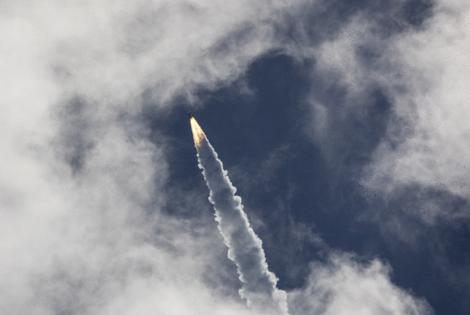NASA cuts missions for Boeing Starliner contract, next flight will have no crew
Published in Science & Technology News
The next trip to space for Boeing’s beleaguered Starliner spacecraft won’t have a crew on board after NASA announced changes to the commercial crew contract that also slashes the total number of missions to the International Space Station.
NASA on Monday announced the update to the 2014 contract that originally called for six operational crewed flights to the station after completing both a successful uncrewed and crewed flight test.
Now, the contract reduces that total to four missions, although the remaining two will be available as options.
The move comes after Starliner’s last flight in June 2024, which flew to the station with two NASA astronauts for what was supposed to be as short as an eight-day stay on board.
But issues with its thrusters and helium leaks on its propulsion module led to NASA opting to send the spacecraft home without a crew, who ended up having to remain on board the station and be flown home on a SpaceX Dragon instead nearly 10 months after their arrival.
“After a thorough evaluation, NASA and Boeing have mutually agreed to modify the contract,” NASA posted in a press release.
Instead of trying to fly with a crew, the mission Starliner-1 will be used to deliver cargo. It will also allow NASA and Boeing to sign off on the fixes implemented since the problematic crew flight test.
“NASA and Boeing are continuing to rigorously test the Starliner propulsion system in preparation for two potential flights next year,” said NASA’s Commercial Crew Program Manager Steve Stich. “This modification allows NASA and Boeing to focus on safely certifying the system in 2026, execute Starliner’s first crew rotation when ready, and align our ongoing flight planning for future Starliner missions based on station’s operational needs through 2030.”
That mission is targeting a launch date of no earlier than April 2026. The spacecraft will be atop a United Launch Alliance Atlas V from Cape Canaveral Space Force Station’s Space Launch Complex 41.
If all goes well, Starliner will be allowed to fly up to three crewed missions to the space station, sharing duties with SpaceX, which is currently in the midst of its 11th operational crew mission, all flown since 2020.
SpaceX and Boeing originally shared the commercial crew contracts awarded in 2014, with Boeing seen originally as the more reliable choice, but Starliner ran into major issues trying to get its uncrewed flight test complete and SpaceX has sinced surged ahead.
The first crewed Dragon mission to make it to the station docked in May 2020, returning orbital human spaceflight missions to the United States for the first time in nearly nine years after the end of the Space Shuttle Program in 2011.
The original fixed-price NASA contract with Boeing was worth $4.2 billion, although that had over the years risen to $4.6 billion, to provide six operational missions to the ISS. NASA posted an updated contract this week that reduces the obligation by nearly $714 million.
“Mission pricing is competition sensitive. This modification represents mutual agreement on numerous changes and associated price adjustments to align with station’s operational needs through 2030,” NASA said in an emailed statement. “This includes flying Starliner-1 prior to the Certification Review, changes to the current number of ordered post-certification missions, updated lead-time schedules for operational flexibility, and considerations for executing joint test campaigns ahead of Starliner-1.”
Boeing has reported since 2016 more than $2 billion in losses for the Starliner program, including charges of $523 million in 2024 while only getting a portion of that contract for development of the spacecraft.
“Boeing remains committed to supporting NASA’s goal of sustained human presence in low-Earth orbit through the ongoing development and certification of the Starliner spacecraft,” the company said in an emailed statement.
The statement also noted a second Starliner mission could come before the end of 2026.
“Safety remains our highest priority as we focus on the Starliner-1 mission, which incorporates our findings and learnings from previous flight tests and testing this fall,” Boeing stated.
_____
©2025 Orlando Sentinel. Visit orlandosentinel.com. Distributed by Tribune Content Agency, LLC.







Comments